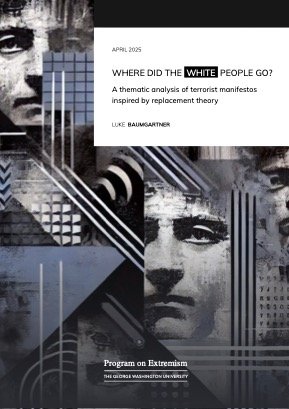By Luke Baumgartner
On July 22, 2011, 32-year-old Anders Behring Breivik embarked on a threehour murder spree across Norway, killing seventy-seven in what would become the single largest loss of life in the country since the Second World War. Beginning that morning in central Oslo, Breivik’s terrorist attack claimed its first victims after detonating a van filled with nearly one ton of explosives outside of the Regjeringskvartalet complex, which housed the prime minister’s administrative offices. Disguised as a police officer, Breivik then boarded a ferry for the island of Utøya, where he proceeded to kill sixty-nine students attending a youth worker’s party summer camp in a mass shooting that lasted nearly ninety minutes. An hour before the bombing, Breivik emailed his manifesto, 2083: A European Declaration of Independence, to more than 1,000 contacts, asking for their assistance in disseminating his magnum opus, which, according to him, took more than three years to complete. The 1,500-page compendium contained a litany of grievances and rails against political correctness, feminists, and “multiculturalist/cultural Marxists,” ultimately accusing them of complicity in a grand conspiracy orchestrated by political elites of the European Union and Arab states to destroy Western civilization through the gradual replacement of white Christian Europeans by way of increased Muslim immigration—in other words, a Great Replacement. Breivik’s actions that day would inspire a cascade of copycat attacks in the United States, New Zealand, and Germany. As part of their attacks, each perpetrator wrote a manifesto to explain the rationale for their actions. In doing so, the manifestos can–and often do–serve multiple purposes: air the personal and societal grievances that led them to kill, provide a blueprint for future attackers, and perhaps, most importantly, gain the public notoriety and infamy they so desperately crave. At its core, terrorism is an act of violence that seeks validation through its very nature as a public spectacle, and thus, manifestos can provide answers to the ever-present question of why an event of this magnitude occurs. While these attacks are separated from one another in both time and space, the ideological glue binding them together is the belief in a racially and culturally homogenous dystopian future, one in which white people gradually cease to comprise demographic majorities in traditionally white dominions such as the United States and Europe. Or, in the most dire circumstances, cease to exist at all. These manifestos contain several common themes central to replacement theory–the conspiracy that motivated their attacks. This paper attempts to build on the current body of academic literature that focuses on the thematic elements of the manifestos and the historical and theoretical foundations upon which the attackers’ justifications for their actions lie. Beginning with a detailed history of replacement sentiment in the United States and Europe, this section seeks to provide the necessary background and context for where replacement theory comes from and how it has motivated actors across time and space. Within the context of the United States, replacement theory finds its ideological roots in late-19th and early-20th century race science, or eugenics, beginning with the works of sociologist Edward A. Ross and anthropologist Madison Grant, both of whom popularized the notion of “race suicide.” Subsequent generations of post-war white supremacists, such as David Duke and David Lane, transformed race suicide into the explicitly anti-semitic conspiracy theory of “white genocide,” laying the groundwork for contemporary militant far-right extremists to coalesce around the idea of replacement theory. Meanwhile, European manifestations of parallel racist conspiracies emerged during an intellectual movement of the 1960s in France known as the Nouvelle Droite, championed by the likes of Jean Raspail. Raspail’s work would influence leading public figures such as Italian author Oriana Fallaci and British Historian Bat Ye’or, who were instrumental in sparking Renaud Camus’ coining of the “Great Replacement.”
Washington, DC: Program on Extremism at George Washington University , 2025. 32p.



